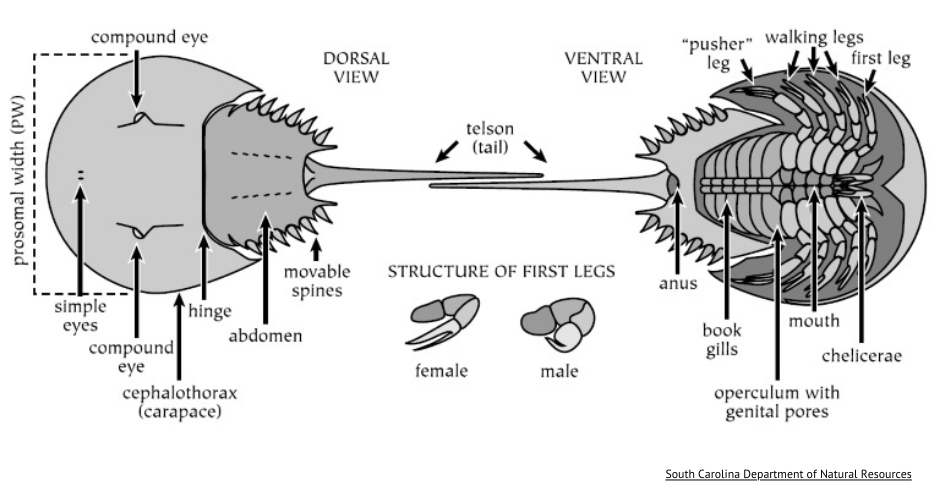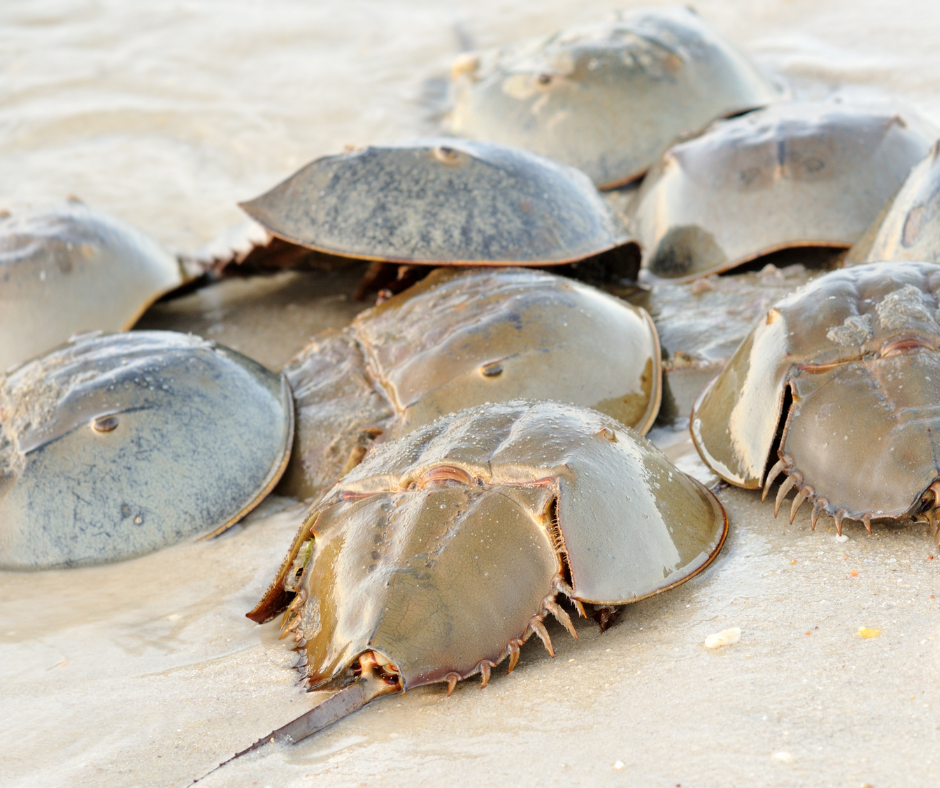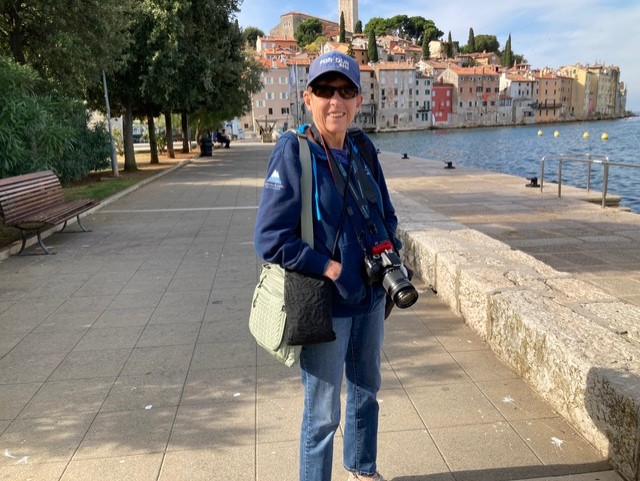They’re baaack! The largest concentration of spawning horseshoe crabs is happening RIGHT NOW along the shores of the Delaware and Rehoboth Bays. These odd-looking creatures have been crawling around Earth’s shallow coastal seas for at least 100 million years before dinosaurs arrived, according to The Nature Conservancy.
May and June are the best times to view the spectacle of horseshoe spawning especially on nights of a new or full moon. Males grasp onto the females and together they head to the shoreline. On the beach, the females dig small nests and deposit eggs, then the males fertilize the eggs.

The head is the largest part of the body. It contains much of its nervous and biological organs – like the brain, heart, mouth, nervous system, and glands, all protected by a large plate. The head also protects a large set of eyes.
Horseshoe crabs have nine eyes scattered throughout the body and several light receptors near the tail. The two largest eyes are useful for finding mates. The other eyes and light receptors are useful for determining movement and changes in moonlight. (For those interested in more: the website Ocean Conservancy, offers a couple of additional fun facts about horseshoe crabs.)
They are arthropods or invertebrate animals. This variety gets its name from their horseshoe-shaped exoskeleton, called a carapace. Horseshoe crabs are more closely related to spiders and other arachnids than they are to what we think of as crabs or lobsters. For your next trivia challenge: they can go a year without eating!
Many mistakenly associate these animals with rays or skates because of their shape, they’re actually not related and aren’t dangerous at all. Their tails, called telsons, aren’t poisonous or venomous; they’re mainly used to steer and flip themselves over in case they get stuck on their backs.
When it’s time to lay her eggs, a female horseshoe crab will deposit somewhere around 4,000 eggs in clusters. She’ll do this several times, laying up to around 20,000 eggs in one night and up to some 100,000 in each meeting season. Not many survive.

Migratory birds and many ocean animals, like sea turtles, feast on horseshoe crab eggs and larvae. The eggs are an important food source for at least 11 species of migratory shore birds who rely on the eggs to replenish their energy reserves before heading to their Arctic nesting grounds. The red knot, which relies strictly on horseshoe crab eggs for food. Think of it a diner for migratory birds.
While the eggs are an important food for predators, the crabs themselves are just as crucial for the medical well-being of humans. Their blood provides a natural source of limulus amebocyte lysate (LAL) which is used to test vaccines, drugs, and medical devices to ensure that they aren’t contaminated with dangerous bacterial toxins.
Blue in color, the blood is obtained by collecting adults and extracting a portion of it. Institutions in the biomedical industry are required by the FMP, released alive to the water from where they were collected. Unfortunately, some die and the procedure has become somewhat political.

The so-called horseshoe “love fest” in Delaware is the largest concentration of spawning horseshoe crabs in the world.
Milton’s annual Horseshoe Festival takes place Saturday, May 27 from 9 am to 3 pm at the Lydia B. Cannon Museum.
Several organization organize teams of volunteers who help collect data on horseshoe crabs including the Center for Inland Bays and the Delaware National Estuarine Research Reserve (DNERR).
By Mary Jo Tarallo, Guest Journalist

Mary Jo Tarallo spent much of her career in public relations with various non-profits and spent 40 years involved with the ski industry as a journalist, public relations director for a national trade association and as executive director of the Learn to Ski and Snowboard initiative. Prior to her ski industry involvement she worked for the Maryland International Center in Baltimore and United Way of Central Maryland. She won a Gold Award for TV programming for a United Way simulcast that starred Oprah Winfrey. She has been cited for her work by numerous organizations. Mary Jo grew up in Baltimore, attended the University of Maryland and Towson University, lived in Washington, DC for 21 years and has been a full time resident of Rehoboth Beach and Milton since May 2019.